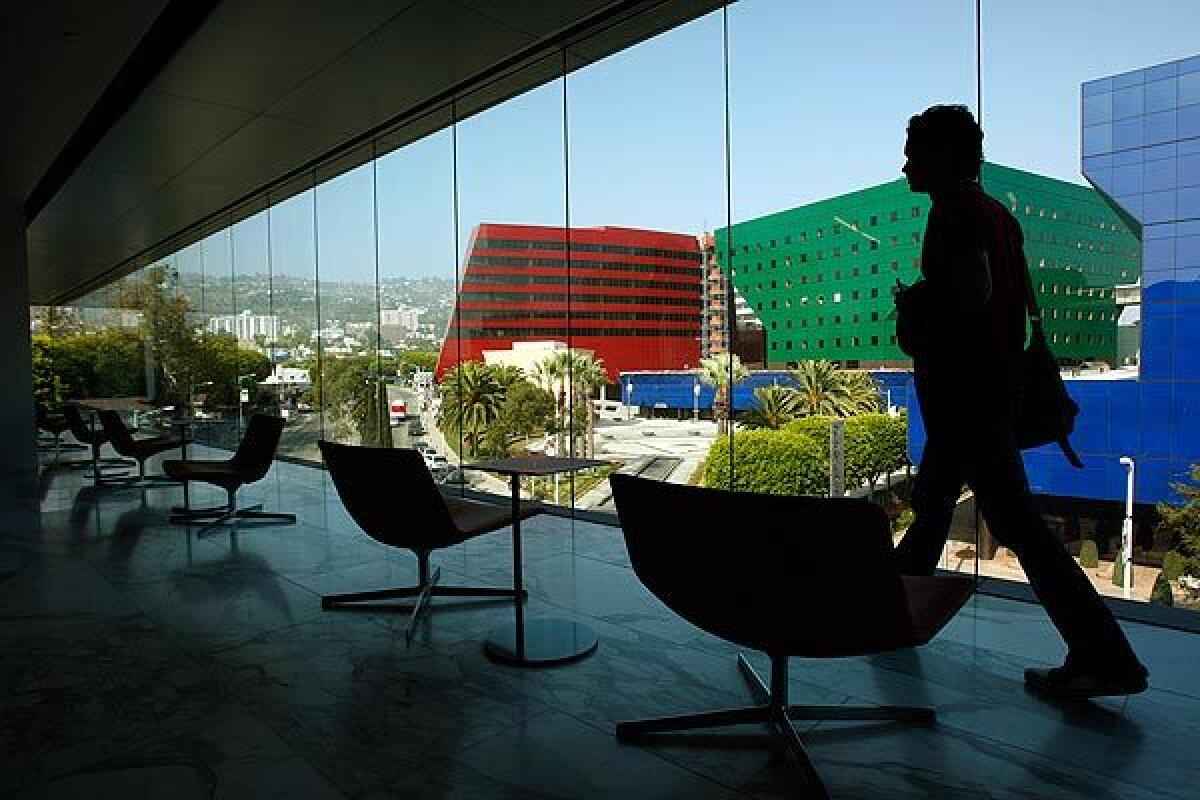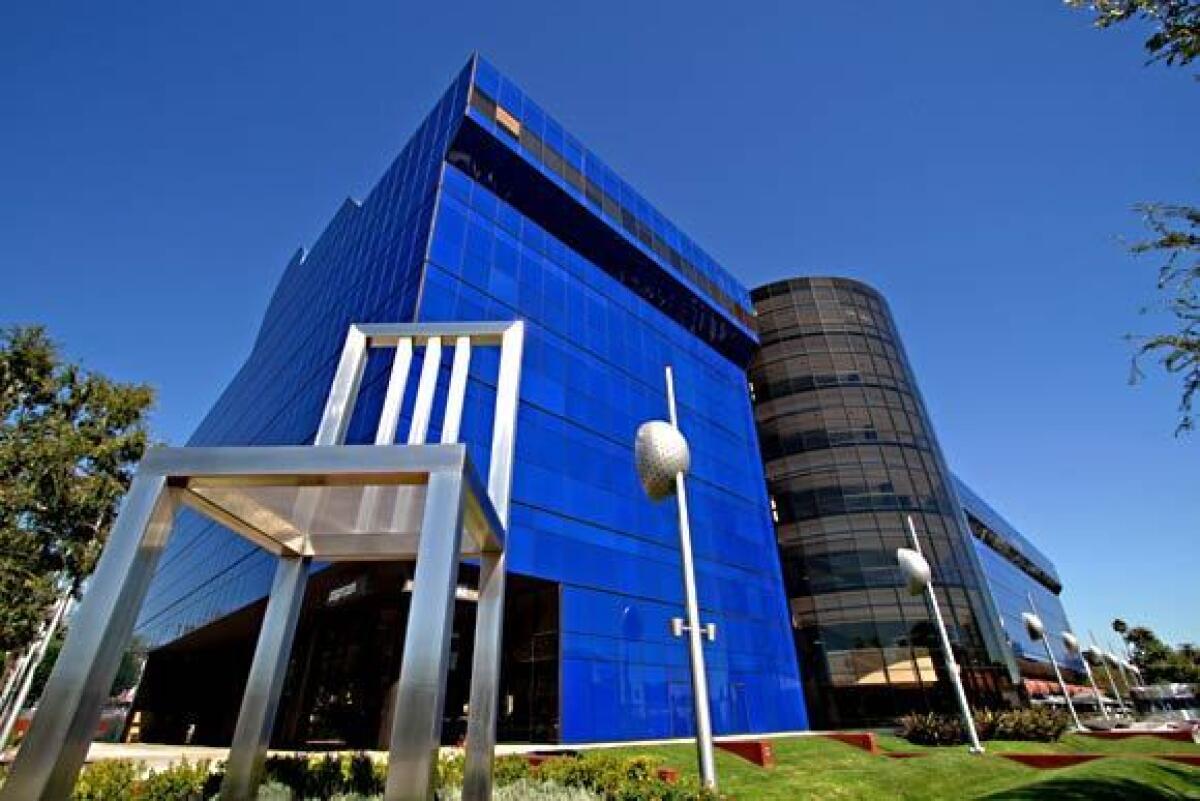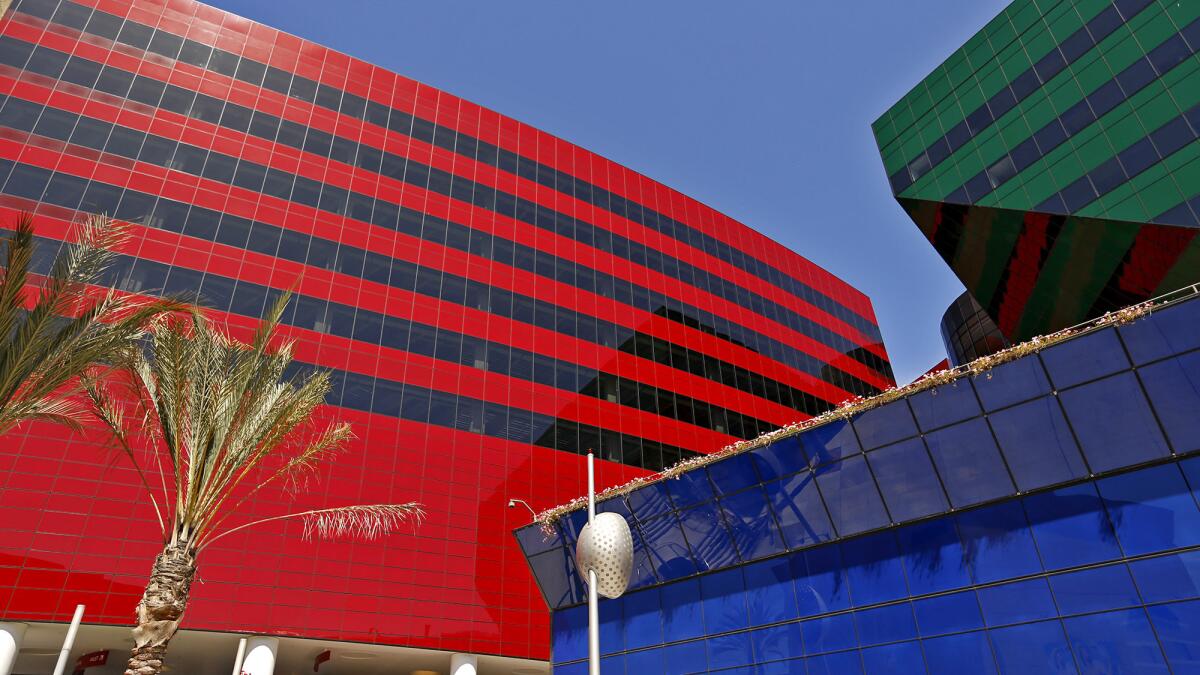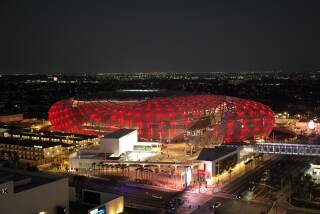Cesar Pelli’s Pacific Design Center changed the L.A. landscape. In a good way?

Los Angeles is famous for outlandish architecture.
But many were unprepared for what architect Cesar Pelli had in mind for a swath of land at the corner of Melrose Avenue and San Vicente Boulevard in West Hollywood that once housed a Pacific Electric railway facility.
In 1975, the first building of the Pacific Design Center opened, altering the landscape and beginning decades of debate about whether the interior design and arts complex is an architectural gem or eyesore.
The massive blue building was meant to stand out, not blend in.
Critics called it the Blue Whale, a sobriquet Pelli embraced.

“It suits it,” he said of the name in a 1986 interview with The Times. “The building sits there like an intruder in an environment filled with little houses yet, in juxtaposition, it does not destroy the scale.”
Pelli said his plan was “not a small building made bigger but an obvious contrast to the local architectural tradition.”
In another interview, he said the design center was “as much a beached whale as a blue one. … It felt like it was in the middle of nowhere, a self-contained design for a select group of people.”
Pelli, who died Friday, designed legendary buildings around the world. But the Pacific Design Center holds a special place in the landscape of Los Angeles, an audacious, still much-debated project that took four decades to complete.
The center saw boom years in the go-go 1980s followed by lean years in the 1990s amid the economic downturn, which brought many vacant storefronts. The situation left some to wonder whether Pelli’s vision would ever be completed.

When the blue building opened, it was the talk of L.A., and some critics had a field day. “A whale beached in a backyard swimming pool,” one said. “An alien presence,” said another.
But it also had its defenders. A Times critic in 1975 called it “one of the most interesting and sophisticated buildings in town, and perhaps also the most provocative.”
As time passed, the Pacific Design Center got more love. It was even the subject of a David Hockney painting. The Los Angeles Conservancy describes it as “at once beloved and reviled by its neighbors.”
In 2006, when work began on the third and final building of the center, Times architecture critic Christopher Hawthorne noted it would be a milestone: “Los Angeles is full of ambitious projects that never saw their final architectural pieces completed: Think of California Plaza downtown, by Arthur Erickson, which was supposed to include a third tower, or Aline Barnsdall and Frank Lloyd Wright’s unrealized plans for Olive Hill. In that sense, if the Design Center is finished, it may surprise Angelenos.”
Hawthorne explained the history this way:
Working then for the firm Gruen Associates, Pelli designed it to match those realities, wrapping its bulging forms in a sealed, glossy envelope of blue-tinted glass. It was architecture as abstract geometry, a building frequently compared to a giant toy and meant to be glimpsed from a car a mile away or a living room in the Hollywood Hills as much as from the sidewalk out front. Its squat, horizontal mass became symbolic of that quintessentially Los Angeles building type: the sideways skyscraper, designed to flow along a commercial corridor and conveniently served by a multilevel parking structure tucked in the back or sunk into the ground.
Ten years later, just after West Hollywood was officially born — and inherited the Blue Whale as one of its few landmarks — Pelli was commissioned to add the final two buildings to the site.
Only the green one was finished, and it struggled over the years to find tenants. In the late 1990s, much of it was converted from showrooms to office space, with Pelli helping to add new windows to a facade that hadn’t previously needed them. But the PDC has found new life under [developer Charles S.] Cohen, who purchased it in 1999 for $165 million.
The Green Building was finally fully leased in 2004, paving the way for the third design to move forward.
That was the final red building, which was completed in 2013. Pelli told The Times he doubted the building could have been built earlier because of the color’s association with communism.

“This would have been impossible in the 1970s because of the political implications of the color,” Pelli said. “Red is wonderful, though.”
When the red building finally opened, Pelli said the decades of work and waiting had been worth it.
“I have worked on this my whole life,” he said. “It has become a very special baby for me.”
More to Read
Sign up for Essential California
The most important California stories and recommendations in your inbox every morning.
You may occasionally receive promotional content from the Los Angeles Times.











